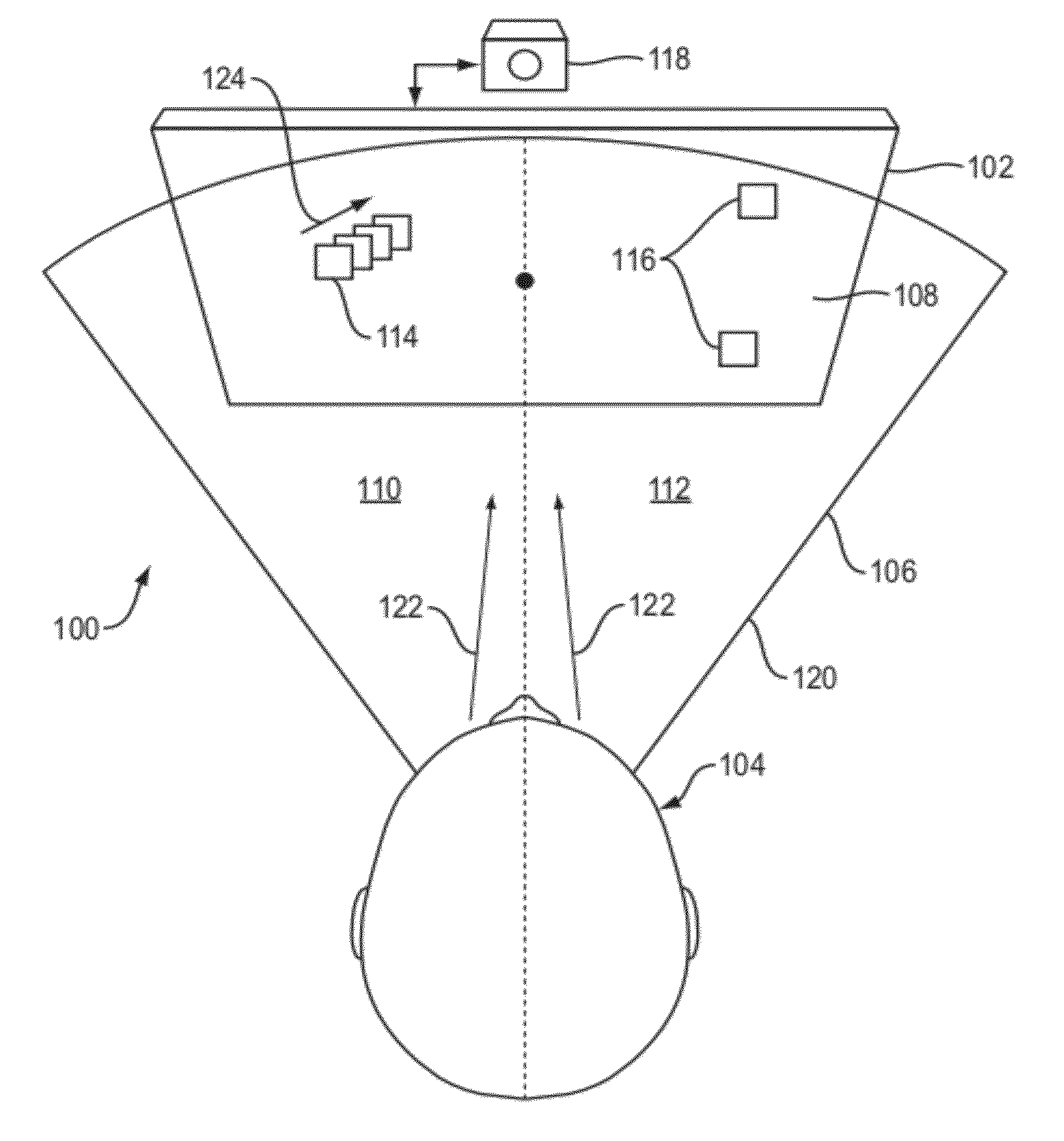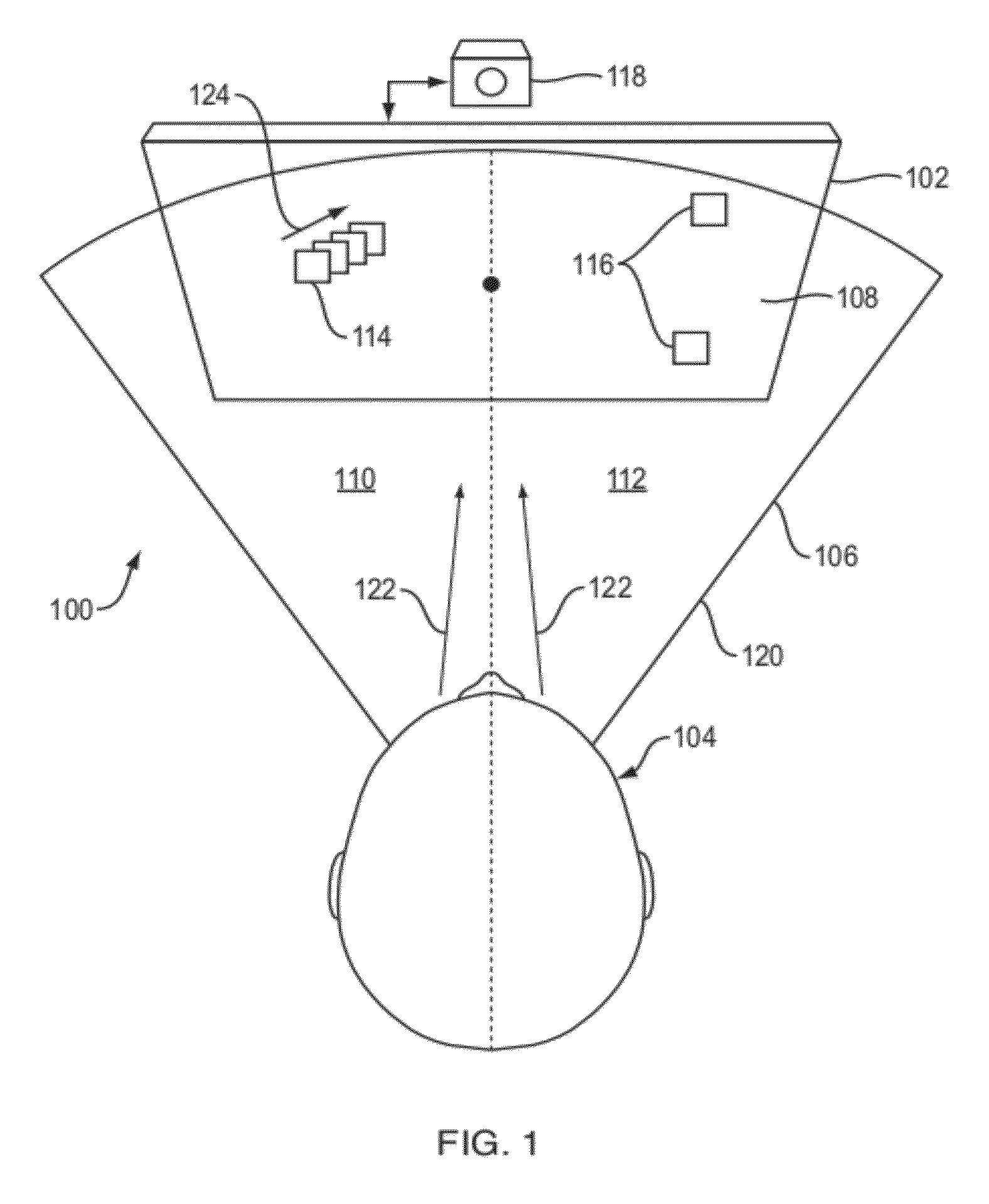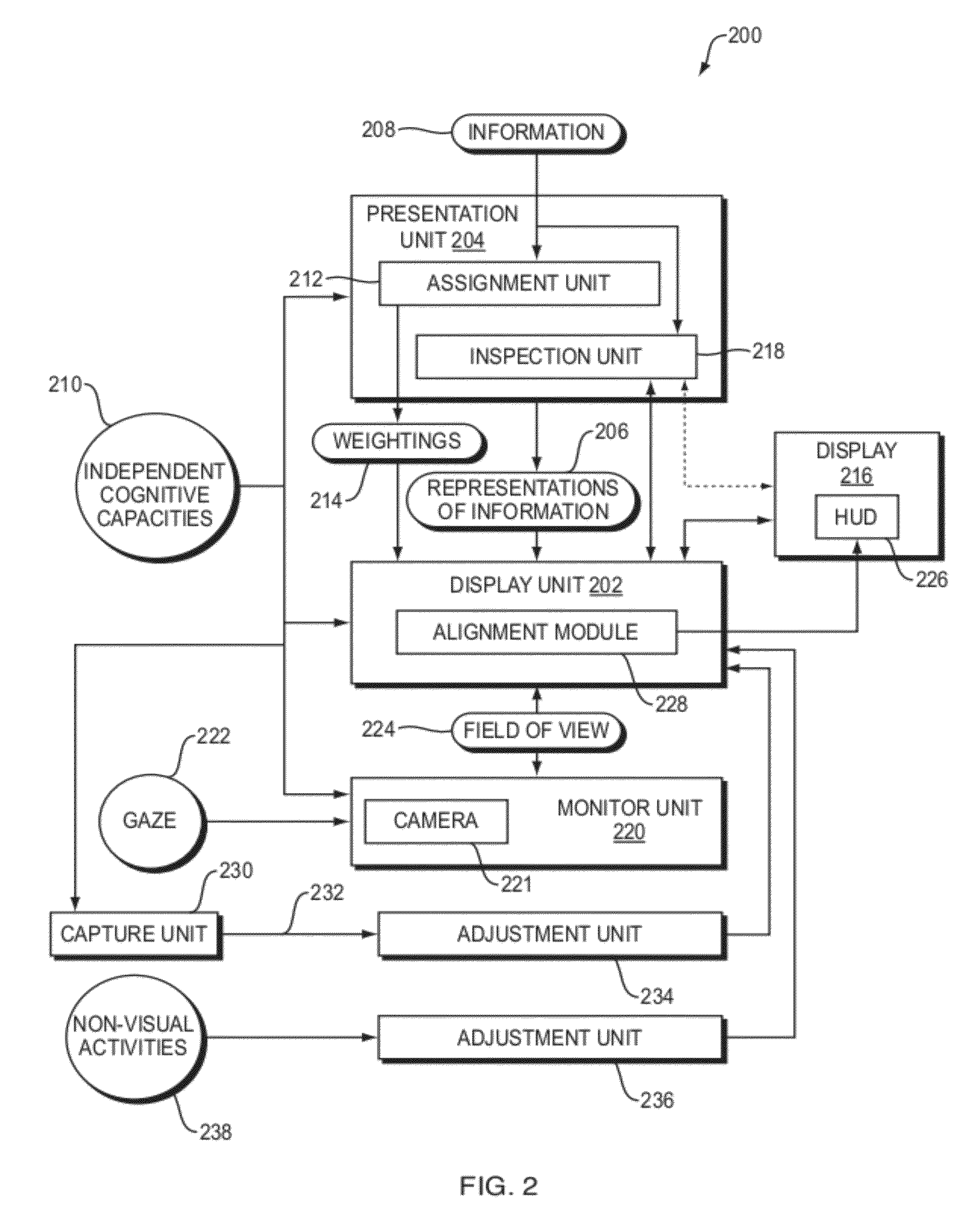Method and apparatus accounting for independent cognitive capacities in the right vs. left half of vision
a technology of independent cognitive capacity and applied in the field of right vs. left eye independent cognitive capacity accounting, can solve the problems of surprisingly limited work environment, low work memory, and inability to fully account for the independent cognitive capacity of the right vs. the left eye, and achieve the effect of reducing the number of representations
- Summary
- Abstract
- Description
- Claims
- Application Information
AI Technical Summary
Benefits of technology
Problems solved by technology
Method used
Image
Examples
Embodiment Construction
[0036]A description of example embodiments of the invention follows.
[0037]The amount of information a person can process from a display, such as a computer display, heads-up display, or television monitor, can be limited because conventional displays do not account for capacity limits in the person's visual hemispheres. Often, conventional displays are unbalanced or present too much information.
[0038]FIG. 1 illustrates a system and method for displaying information according to an embodiment of the invention. Example system 100 includes a display 102 for displaying the information, or representations thereof, to a subject 104. The subject's visual space 106 schematically illustrated in FIG. 1 as a fan-shaped region, includes a right half 110 and a left half 112. Displaying the information includes generating representations of information 108 in a manner accounting for independent cognitive capacities corresponding to the subject's left and right halves 110, 112 of visual space 106....
PUM
 Login to View More
Login to View More Abstract
Description
Claims
Application Information
 Login to View More
Login to View More - R&D
- Intellectual Property
- Life Sciences
- Materials
- Tech Scout
- Unparalleled Data Quality
- Higher Quality Content
- 60% Fewer Hallucinations
Browse by: Latest US Patents, China's latest patents, Technical Efficacy Thesaurus, Application Domain, Technology Topic, Popular Technical Reports.
© 2025 PatSnap. All rights reserved.Legal|Privacy policy|Modern Slavery Act Transparency Statement|Sitemap|About US| Contact US: help@patsnap.com



